Easy homemade tofu made with soybean and gypsum. Enjoy with vegan and vegetarian stir fry recipes, grilled crispy skewers, or pan-fried dishes.
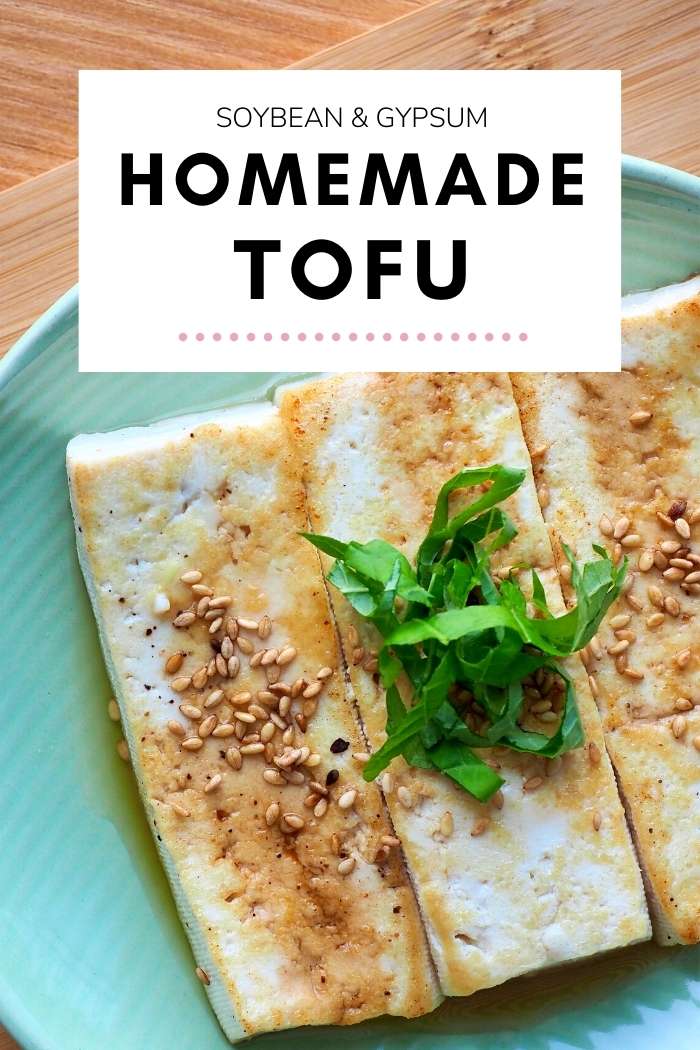
Tofu is a staple of East Asian cuisine that has been widely adopted as a meat replacement by vegetarians, vegans, and anyone looking to cut back on meat. Thanks to its popularity, you can find it in most health food stores, Asian markets, and even larger, well-stocked supermarket chains.
However, sometimes tofu isn’t available. That does not mean your vegetarian menu is doomed! Tofu is easy to make at home with a few special ingredients and equipment.
Here is how to make homemade tofu for the next time your local store runs out or you just want a culinary challenge.
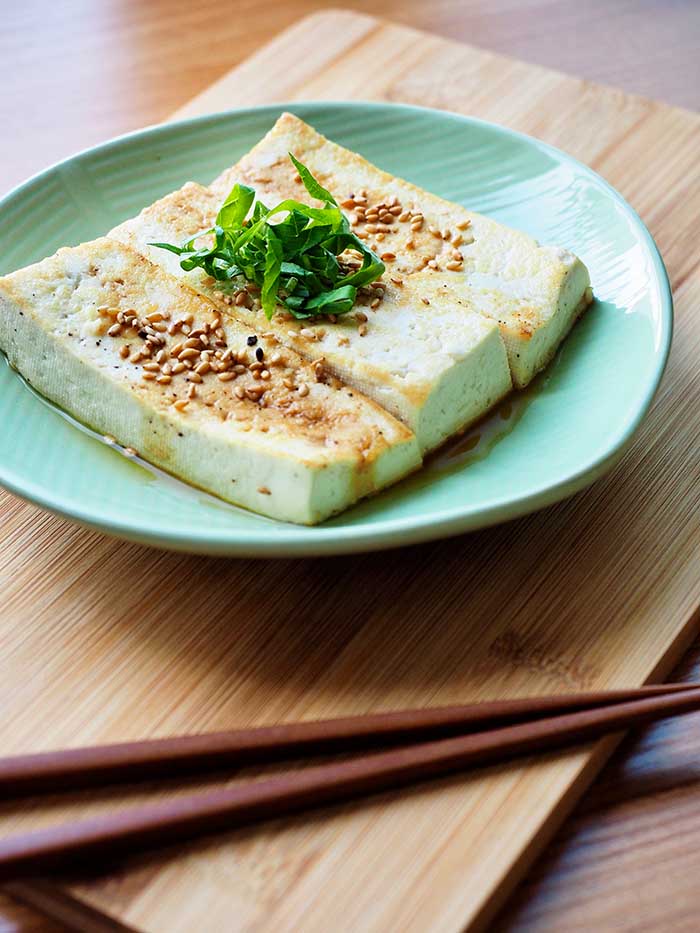
What is tofu?
Tofu is condensed soy milk curd pressed into a solid texture. The legend goes that it was discovered in China by accident several millennia ago when someone accidentally mixed a coagulant into a batch of soy milk.
Tofu on its own has a mild flavor, but it absorbs spices and sauces very well, making it a staple of Chinese, Japanese, and other East Asian cuisines.
The process of making tofu is actually very similar to cheesemaking, which is why home cooks have been doing it with ease for centuries.
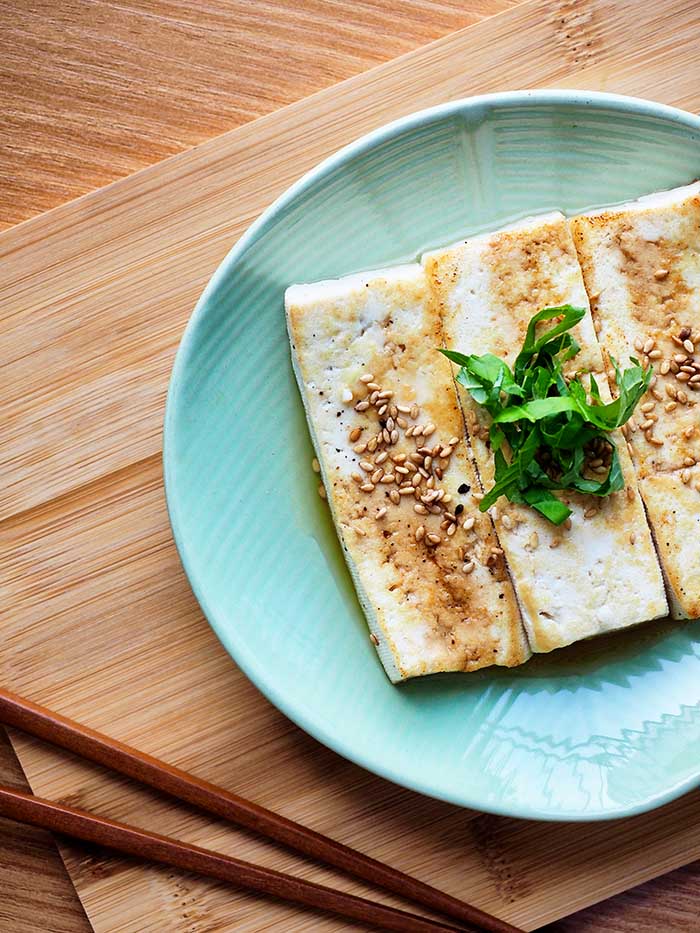
Different types of tofu
If you’ve shopped for tofu before, you probably know that there are a few different types of tofu. They differ in their texture and water content, ranging from very smooth to firm. There are also smoked tofu varieties available, although those are less common.
You can make any of these types at home. Pressing tofu for more time will yield firmer tofu, while pressing it for less will get you silken or regular tofu. Here is your guide to the different types of tofu and their uses.
Silken tofu
Silken tofu contains the most water. It has a smooth, slippery texture and falls apart easily when handled. Many silken tofu recipes use the ingredient as a dairy replacement (it has a similar texture to ricotta), to make vegan desserts, or as a sauce base.
Regular tofu
Regular tofu holds its shape better than silken tofu, but is still soft and crumbly. This is the most common building block for traditional East Asian dishes. You can use it in soups, stews, and sauces.
Firm tofu
Firm tofu has a lower water content than regular tofu, giving it a firmer texture and more structural integrity. You can use it in stir-fries, stews, fillings, and other dishes. Before preparing firm tofu, be sure to drain the water to make the most of its texture.
Extra-firm and super-firm tofu
Finally, extra-firm and super-firm tofu have most of their water content extracted out. They function best as meat replacements and can be prepared any way that meat is made. However, extra-firm and super-firm tofu will not absorb marinades and sauces as well due to their rigid structure.
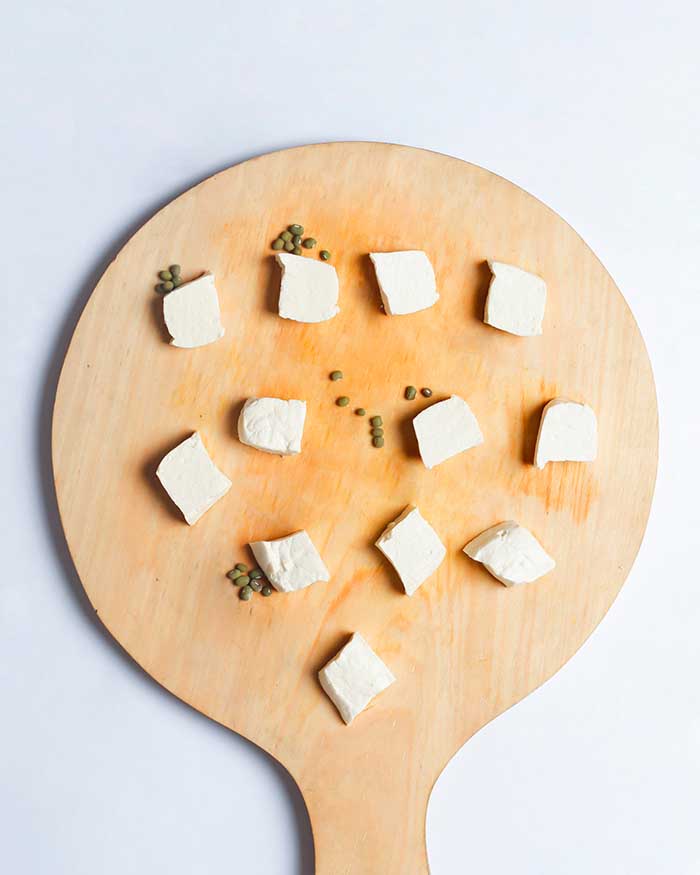
Is it difficult to make tofu?
For centuries, East Asian home cooks have been making tofu at home. It is a simple process similar to cheesemaking. Although you may need a few specialty ingredients and some trial and error, you should have no trouble making tofu.
Types of tofu coagulants
One of the most important ingredients in making tofu is the coagulant. A coagulant is an ingredient that helps liquids solidify. In this case, it makes the soy milk clump together and yield the curds that form tofu. There are a few different ones that are used in tofu making.
Salt coagulants
Salt coagulants include nigari, a common Japanese ingredient, and gypsum, a salt derived from calcium commonly used in tofu and beer-making. Salt coagulants yield tofu of all textures and work the best. The difference between them comes down to flavor and preference. Nigari tends to make slightly bitter tofu, while tofu made with gypsum is sweeter.
Acid coagulants
The second type of coagulants are acid coagulants. This includes GDL (glucono delta lactone), a common coagulant. Acid coagulants are most often used when making silken tofu or soy desserts because they yield a softer tofu.
Homemade replacements
Depending on where you live, you may not have access to an Asian market that sells food-grade gypsum or nigari. You can replace salt coagulants with Epsom salt and acid coagulants with lemon juice or vinegar. These homemade replacements will still help you make tofu, but the texture may be grainier.
What you will need to make tofu
Here are the basic ingredients and equipment that you will need to make tofu.
Ingredients
You cannot have tofu without soybeans. Make sure that they are dry before you start the recipe.
Next, you need plenty of water to soak the soybeans. Tap water is fine since you will be boiling the mixture later on.
Finally, you need a coagulant of your choice. This can be gypsum, nigari, Epsom salts, or even lemon juice.
Equipment
The equipment list for making tofu is a little more involved than the ingredients list. Here is what you will need.
First, you will need a large bowl and pot to soak the beans. You will also need a blender for the bean mixture.
Then, you will need equipment to strain the tofu. Cheesecloth works best as a straining material, but muslin cloth is a great alternative to cheesecloth. You may also need a strainer or skimmer spoon.
Finally, you will need a tofu mold. You don’t need a specialty tofu mold, any square mold or tin will work well. Be sure to have something heavy on hand to press the tofu once it is in the mold.
How to make homemade tofu
Here are the basic steps to make tofu:
- Soak the soybeans in water for at least six hours or even overnight.
- Add the soaked beans and water to the blender. (The ratio is one cup of beans to two cups of water). Blend in batches until it is smooth and creamy. That yields soy milk.
- Once you’ve blended your soy milk, use a cheesecloth or strainer to strain out the pulp from the soy milk. Skim any foam from the top of the drained liquid as well.
- Transfer the drained liquid to a pot and simmer for about 15 minutes. As the milk is simmering, watch it carefully and skim off any foam as this could affect the tofu’s texture.
- Once the milk comes to a boil and is foaming heavily, remove it from the heat and add your coagulant (if you are using gypsum, dilute it with water first). Stir the mixture a few times and you should notice curds forming. If it isn’t curdling yet, add more coagulant and return it to the heat.
- Let it sit for 15 minutes.
- Put a cheesecloth in your mold and place the mold on top of a tray or something to catch the draining liquid. Put the curds inside the mold and wrap it completely with the cloth. Put something heavy on the tofu to press it.
- Let the tofu sit in the mold as desired, depending on the texture that you are trying to achieve. (For firm tofu, let it sit for several hours.)
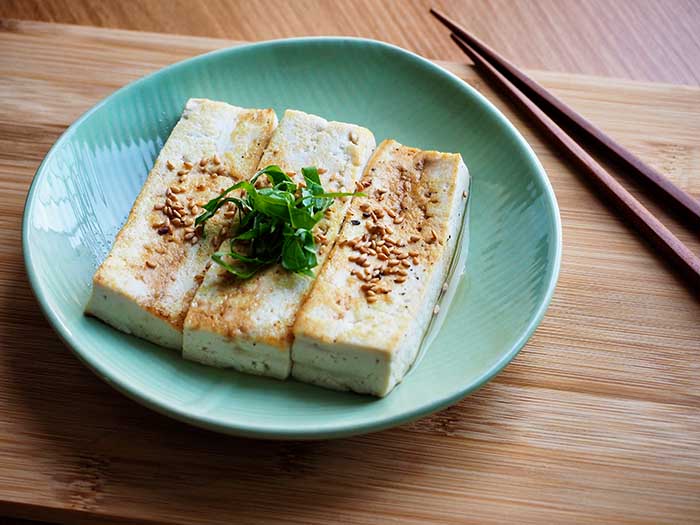
How to store homemade tofu
Homemade tofu can be kept in the fridge for up to four days. Be sure to store it in water until you can use it. Keeping it in water prevents the tofu from drying out. Before you cook with it, drain the water and press the tofu for a few minutes to make it firm.
You can also store homemade tofu in the freezer for several months. Just be aware that freezing tofu makes it firmer, which is great for firm tofu but not so much if you want silken tofu.
How to make tofu crispy
Once you’ve gone to all the trouble of making your own tofu, you want it to taste as good as possible. While some tofu dishes, particularly those made with silken tofu, call for softer tofu, usually you want tofu to be firm and crispy.
To get crispy tofu, press your tofu before cooking. While you can buy a specialized tofu press, you can also replicate the process with equipment you have at home.
First, drain the tofu of the liquid it was stored in. Then, wrap it in a towel or paper. Put it on a plate and put something heavy on top of the tofu. After about half an hour, your tofu should be drained of excess liquid and ready to cook.
For extra crispiness, toss your tofu in a starch such as cornstarch or arrowroot powder. Then, you can make it crispy by baking or frying it.
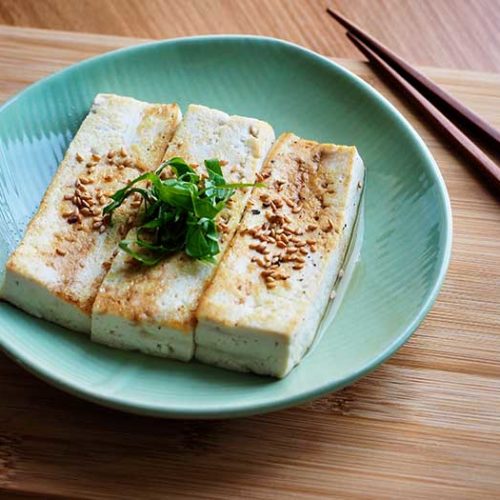
Homemade Tofu
Equipment
- large mixing bowl and pot to soak the beans
- blender
- cheesecloth
- tofu mold
Ingredients
- 1 lb dry soybeans
- tap water
- 1 tsp gypsum
Instructions
- Soak the soybeans in water for at least six hours or even overnight.
- Add the soaked beans and water to the blender. (The ratio is one cup of beans to two cups of water). Blend in batches until it is smooth and creamy. That yields soy milk.
- Once you’ve blended your soy milk, use a cheesecloth or strainer to strain out the pulp from the soy milk. Skim any foam from the top of the drained liquid as well.
- Transfer the drained liquid to a pot and simmer for about 15 minutes. As the milk is simmering, watch it carefully and skim off any foam as this could affect the tofu’s texture.
- Once the milk comes to a boil and is foaming heavily, remove it from the heat and add your coagulant (if you are using gypsum, dilute it with water first). Stir the mixture a few times and you should notice curds forming. If it isn’t curdling yet, add more coagulant and return it to the heat.
- Let it sit for 15 minutes.
- Put a cheesecloth in your mold and place the mold on top of a tray or something to catch the draining liquid. Put the curds inside the mold and wrap it completely with the cloth. Put something heavy on the tofu to press it.
- Let the tofu sit in the mold as desired, depending on the texture that you are trying to achieve. (For firm tofu, let it sit for several hours.)



